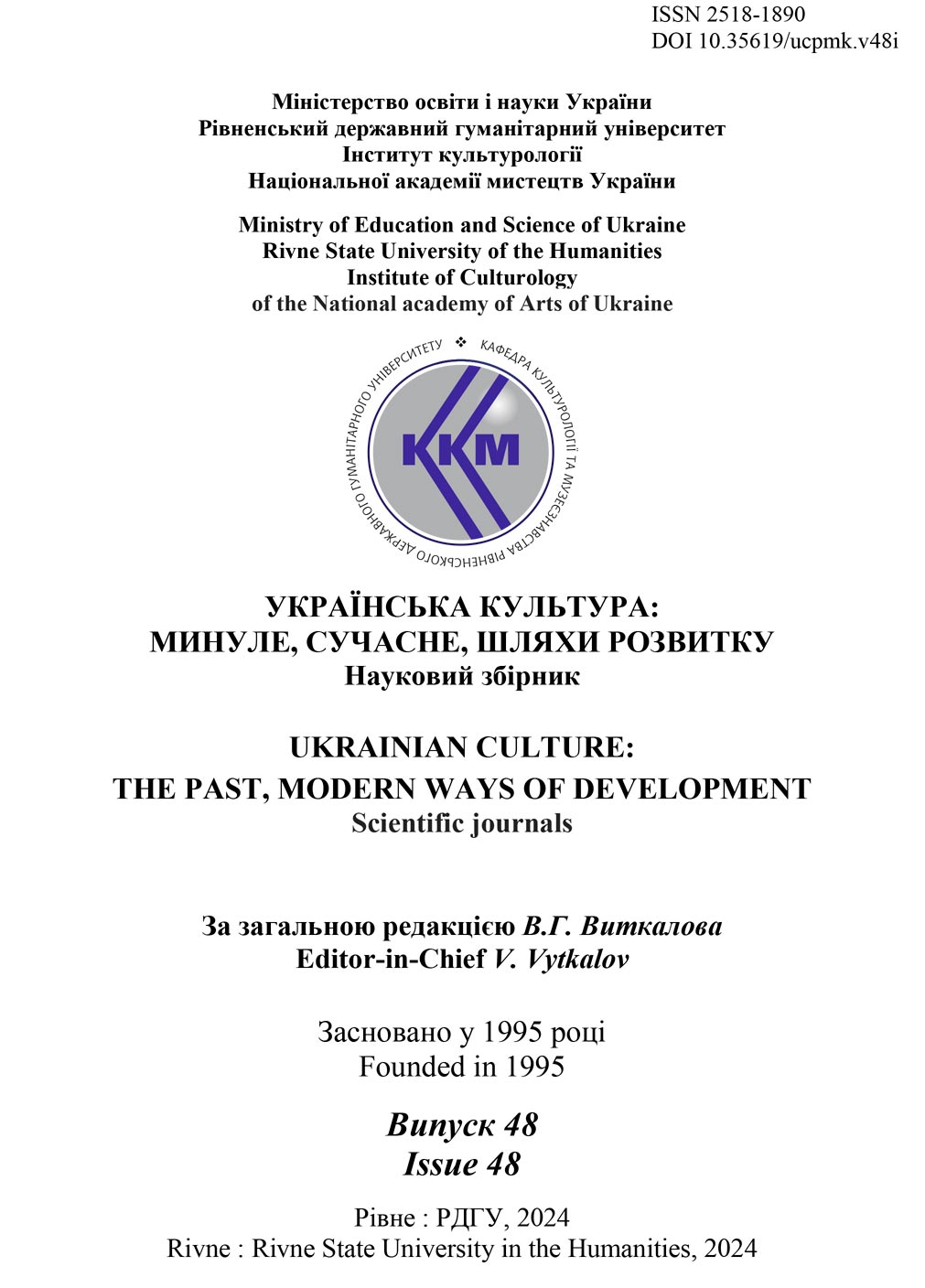PROBLEMS OF RECONSTRUCTION AND THE SIGNIFICANCE OF SLAVIC MUSICAL INSTRUMENTS IN THE SPIRITUAL CULTURE OF MEDIEVAL EUROPE
Abstract
The aim of the paper is to introduce new archaeological and iconographic sources into scientific circulation and rethink existing theories, as well as to separate the medieval Slavic musical-instrumental stratum from the synchronously existing instrumentation of other ethnic groups of medieval Europe.
Research methodology. The article uses the method of distinguishing the Slavic «musical-instrumental substrate» from the same type of foreign-ethnic instruments of Central, Southern and Eastern Europe.
Results. The analysis of various types of percussion noise, wind and string instruments that belonged to the single Slavic massif on the territory of medieval Europe allowed to reconstruct the missing links of the all-Slavic instrumental culture. The applied method of isolating the Slavic «musical-instrumental substrate» from the same type of
foreign-ethnic instruments of ethnic groups of Southern, Central and Eastern Europe led to the following conclusions.
Noise percussion instruments – egg-shaped rattles (pysanky-kalataltsia), which were made in the lands of the Eastern (Kyiv State), Western (Poland) and Southern (Bulgaria) Slavs, had an important sacred meaning in their spiritual culture and were connected with the cult birth and revival of life, fertility, agrarian magic. As objects of import, they were spread not only
through the lands of the Slavic world, but also as personal amulets were taken with merchants to the non-Slavic countries of Northern and Central Europe, the Caucasus and the Crimea. The manufacturing technology and ornaments of egg-shaped rattles from the territory of Poland testify not only to the influence of the traditions of their manufacture in the Kyivan State, but also to the existence of local and territorial differences in their production. The discovery of a long wooden pipe in the lands inhabited by the Slavs in Eastern Germany (Löddig-See near Parhim), which was known only from Slavic iconographic sources, provided an opportunity to investigate the method of its manufacture. It is still used in the folk practice of making wooden pipes and horns, in particular in Polissia and the Carpathians.
The missing link between the earliest written mention of lyre-shaped guslas (T. Simokatta, 6th century) and their depiction on chronologically synchronous iconographic sources originating from Greece (Velestino, beginning of 7th century) was established. The invariance of the form was observed on historically later archaeological finds of lyreshaped
gusels of the 11 th – 13 th centuries. from the territory of Ukraine (Zvenyhorod), Poland (Gdansk) and Russia (Novgorod). Written, iconographic and archaeological examples of this variety of stringed instruments testify that this type existed among the Slavs for five centuries, had a sacred meaning and was an attribute of pagan rituals.
For almost a millennium, there were zither-like instruments (psalteries) of a triangular shape with a vertical way of holding of Eastern and Western Slavs. They were mentioned by Isidore of Seville (VI century), later by Arab authors (X–XI centuries). Their images are known from East Slavic iconography of the XI – XIII centuries.
Novelty. New musical instruments from archaeological excavations in the territory of settlement of the medieval Slavs have been introduced into scientific circulation.


